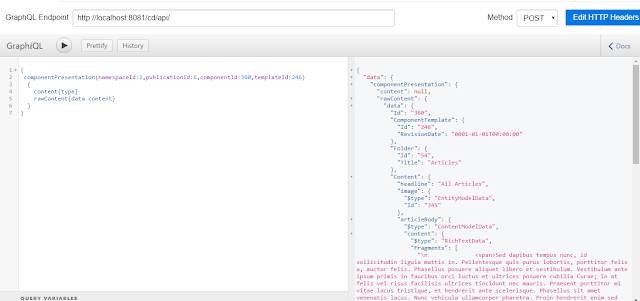Recently, One of our customers requested this, can we have new SDL Tridion Sites 9 feature GraphQL in SDL WEB 8.5. They have the following questions before we can proceed to POC.
The client is very excited about this new GraphQL feature as this will bring lots of improvement in their existing implementation. So, they wanted to know can we have this new feature in 8.5.
The client is very excited about this new GraphQL feature as this will bring lots of improvement in their existing implementation. So, they wanted to know can we have this new feature in 8.5.
- Can the CD side be upgraded to Sites 9 to have the GraphQL API, but the CM be left on Web 8.5?
- Can only the content microservice be updated to Sites 9 (while leaving the Broker and Deployer on 8.5)
- Broker and Deployer also have to upgrade to 9?
We also need to think about downtown while we do all these.
We did some investigation and come up with this idea/approach that we are not going to upgrade anything here just to have the new Content API feature (GraphQL).
So, We decided to Install only the Tridion Sites 9 Content Microservice and this will read the data from existing WEB 8.5 broker DB. NOTE:- We are still running the 8.5 services here no upgrade yet on CM or CD side.
With this approach, we were able to deliver what the client was requested from us. Now they are running their existing site using 8.5 content delivery and parallelly they started planning on building apps using 8.5 broker data using Tridion sites 9 GraphQL API.
It was an interesting POC.
 |
| WEB 8.5 Content Service |
 |
| Tridion Sites 9 Content Service running on same ENV and hitting 8.5 Broker to fetch the data. |
Happy Coding and Keep Sharing !!!
















